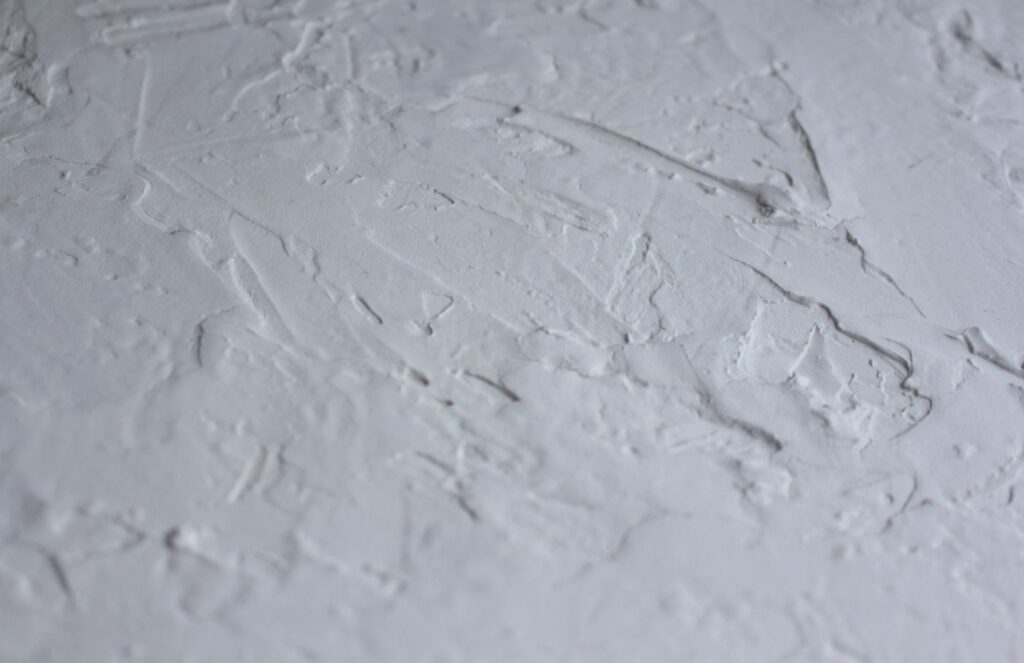Have you ever struggled to concentrate on shopping in a store filled with echoes, chatter, and clattering footsteps? Many retail spaces face the challenge of controlling noise levels, which can affect customers and staff.
In this post, we explore how plastering can transform the acoustic experience in retail environments, making them more peaceful and enhancing the overall shopping experience.
Let’s get straight to the point.
Plastering can significantly improve acoustics and soundproofing in retail spaces, enhancing the shopping experience by reducing noise and echoes and improving speech clarity.
Acoustic plaster absorbs sound waves, creating a calmer environment, while gypsum-based plaster offers sound absorption and aesthetic appeal.
Practical strategies like noise-reducing plasterboard, adding insulation, and optimising flooring can further control noise. Plastering also provides durability, aesthetic flexibility, and quick installation.
Plastering effectively manages sound, helping create a quieter, more inviting store atmosphere that aligns with the brand image, boosting customer satisfaction and sales.
Understanding Acoustics In Retail Spaces
What Are Acoustics?
Acoustics refers to how sound behaves within a space. In a retail environment, it includes factors like noise levels, reverberation, and speech clarity.
Poor acoustics can make it hard for people to communicate and affect the overall shopping atmosphere.
The Impact Of Sound On Customer Experience
A store’s sound environment significantly influences how customers perceive it. Excessive noise or echoes can create a stressful experience.
In contrast, a well-designed acoustic setting can create a more pleasant shopping environment, encouraging customers to stay longer and engage more with the products.
Common Acoustic Challenges In Retail Environments
Retail spaces often face several acoustic challenges that can negatively impact the shopping experience:
- High Noise Levels: Sounds from foot traffic, HVAC systems, or external factors can create a noisy atmosphere that distracts customers.
- Reverberation: Hard surfaces in stores can cause sound to bounce around, leading to echoes and difficulty understanding speech.
- Noise Transmission: In shared retail spaces or malls, noise can easily travel between stores, disrupting the atmosphere.
- Inconsistent Sound Quality: Uneven sound distribution can make some store areas unpleasant, affecting customer flow.
How Plastering Enhances Retail Acoustics?
Improving the acoustics in retail spaces can greatly impact customer satisfaction and employee productivity. Here are key ways in which plastering enhances sound control:
Using Acoustic Plaster
Acoustic plaster plays a significant role in managing sound in retail environments:
- Minimises Echoes: Its porous texture absorbs sound waves, reducing echoes and creating a calmer atmosphere.
- Sound Wave Trapping: By preventing sound waves from bouncing back, acoustic plaster ensures a quieter shopping space.
- Improves Customer Comfort: Reducing background noise makes it easier for customers to focus, enjoy their experience, and engage with staff.
Benefits Of Gypsum-Based Plasters
Gypsum-based plasters are among the best choices for enhancing retail acoustics. They offer several advantages:
- Excellent Sound Absorption: Gypsum plaster dampens sound, creating a quieter environment.
- Smooth Finish: This finish provides a sleek look that enhances the store’s overall aesthetics while performing its acoustic function.
- Versatility: It can be combined with other materials to create modern and traditional designs that match the store’s branding.
Soundproofing With Plaster
Plastering isn’t just for aesthetics; it’s a powerful tool for soundproofing:
- Creates a Noise Barrier: Plaster acts as a solid barrier that blocks sound from travelling between rooms or different areas within the store.
- Dampens External Noise: Limits outside noise intrusion, making the retail space more serene and conducive to shopping.
- Enhances Privacy: Helps keep private conversations between staff and customers within designated areas, promoting a sense of discretion.
Additional Tips For Maximising Acoustic Plaster Efficiency
To get the most out of your acoustic plaster, consider the following:
- Layer Thickness: A thicker layer of plaster improves its sound absorption capabilities.
- Combining with Insulation: Pairing plaster with wall insulation further enhances its noise-reduction properties.
- Maintenance: Regularly check the plaster for cracks or damages to ensure it maintains its acoustic properties.
Incorporating these techniques can transform a retail space into a quieter, more inviting environment, enhancing the overall shopping experience for customers and staff.
Practical Tips For Improving Retail Acoustics
1. Choose Plasterboard With Noise Reduction Properties
Opting for a plasterboard designed to reduce noise is a great first step. Products like perforated plasterboard can significantly improve acoustics by trapping sound waves.
Stacking plasterboard or using alternative installation techniques can further enhance its effectiveness.
2. Add Acoustic Insulation
Adding insulation in wall cavities can significantly reduce noise transmission. Acoustic batts, thicker than standard insulation, help dampen sound between floors and rooms, making them ideal for multi-level retail spaces.
3. Consider Flooring Options
Flooring plays an important role in controlling noise levels. Carpets or carpet tiles are excellent choices for reducing impact noise in high-traffic areas. Other options include:
- Sprung floating floors
- Underfloor acoustic insulation
- Acoustic-grade timber floor underlay
Strategically placing rugs in frequently used areas can also help in reducing noise.
4. Seal Doors With Acoustic Materials
Even small gaps around doors can let noise in or out. Installing perimeter seals or acoustic door kits can enhance soundproofing and control the store’s noise level.
Advantages Of Plastering In Retail Spaces
1. Durability And Longevity
Plaster is known for its durability and long lifespan. It can withstand daily wear and tear in a busy retail environment, making it a cost-effective investment for stores looking to maintain aesthetics and functionality.
2. Aesthetic Flexibility
One of the plaster’s main advantages is its versatility. It can be moulded, textured, or painted to match any store’s design requirements.
This allows retailers to create customised looks that enhance their brand image while improving acoustics.
3. Easy Maintenance
Plaster surfaces are relatively easy to clean and maintain. In environments like restaurants or cafes, where cleanliness is important, plaster can be wiped down with a damp cloth to keep it looking pristine.
4. Speed Of Installation
Plastering is a relatively quick process that benefits retailers with tight renovation schedules. The quick application reduces downtime, allowing stores to return to business faster.
Addressing Acoustic Plastering Challenges
When using plaster for soundproofing and acoustic enhancement, there are some considerations to keep in mind:
- Material Selection: Choosing the right type of plaster that meets both acoustic and aesthetic needs.
- Thickness and Density: Ensuring the plaster layer is thick enough to absorb sound without compromising structural integrity.
- Installation Expertise: Proper installation is critical for achieving the best soundproofing results.
- Integration with Other Materials: Plaster should complement other materials in the store to create a cohesive design.
- Environmental Factors: Considering temperature, humidity, and moisture that might affect plaster.
- Regulatory Compliance: Ensuring the acoustic design meets local noise and building regulations.
Plastering’s Role In Retail Design
1. Enhancing Brand Image
Plastering can align a store’s design with its brand image. From sleek, modern finishes to more textured and artistic designs, plaster offers a range of options to create a visually appealing environment that resonates with customers.
2. Improving Customer Experience
Effective acoustic plastering controls noise and makes the space feel more welcoming. A quiet and comfortable shopping environment encourages customers to spend more time in the store, boosting sales and customer satisfaction.
3. Customisation Options
With plaster, retailers can choose from different textures, patterns, and colours. This allows them to create unique and engaging interiors that stand out from competitors.
4. Integration With Lighting And Space Design
Plaster can be seamlessly integrated with lighting designs, enhancing the store’s aesthetics and functionality. This thoughtful integration creates a harmonious balance between visual appeal and acoustic control.
Conclusion
Plastering can greatly improve the acoustics and soundproofing of retail environments, creating a more enjoyable shopping experience.
Plaster helps transform stores into quieter, more customer-friendly spaces by addressing noise levels, echoes, and speech clarity.
Retailers can achieve aesthetic and functional benefits by utilising specialised plastering techniques, such as acoustic plaster and proper insulation.
This approach enhances the atmosphere and aligns with the brand’s image, making plaster a valuable addition to any retail fit-out project.
For businesses looking to elevate their retail environment, investing in plastering solutions offers a practical way to manage sound, improve customer interactions, and create a more polished and professional space.
FAQs About Plastering
How Can Plastering Improve Retail Acoustics?
Plastering is crucial in improving retail acoustics by providing a smooth and even surface. This helps minimize sound reflections and echoes, creating a more controlled and pleasant acoustic environment within the retail space. Plastering absorbs sound, reducing noise levels and creating a more comfortable shopping experience for customers.
Does Plastering Help In Soundproofing Retail Spaces?
Yes, plastering contributes significantly to soundproofing retail spaces. Plaster acts as a barrier that absorbs and dampens sound, preventing it from travelling between different store areas. This helps create a quieter, more private shopping atmosphere, enhancing the customer experience.
What Types Of Plaster Are Best For Improving Retail Acoustics?
Gypsum-based plasters are commonly used to improve retail acoustics. These plasters have excellent sound absorption properties, effectively reducing noise levels within a space. Lime plasters can also be suitable, as they provide a smooth finish and contribute to sound control.
Can Plastering Enhance The Aesthetics Of A Retail Space?
Absolutely, plastering improves acoustics and enhances the visual appeal of a retail space. The smooth and flawless finish achieved through the plaster application creates a sophisticated and polished look. With various textures and finishes available, plastering allows for customization, adding to the overall aesthetics of the retail environment.
Is Plastering A Cost-Effective Solution For Retail Acoustics?
Plastering is considered a cost-effective solution for improving retail acoustics. Its benefits in terms of sound absorption and soundproofing contribute to a better shopping experience for customers. Additionally, plaster’s long-lasting and durable nature makes it a sustainable investment for retailers looking to enhance both acoustics and aesthetics in their stores.



